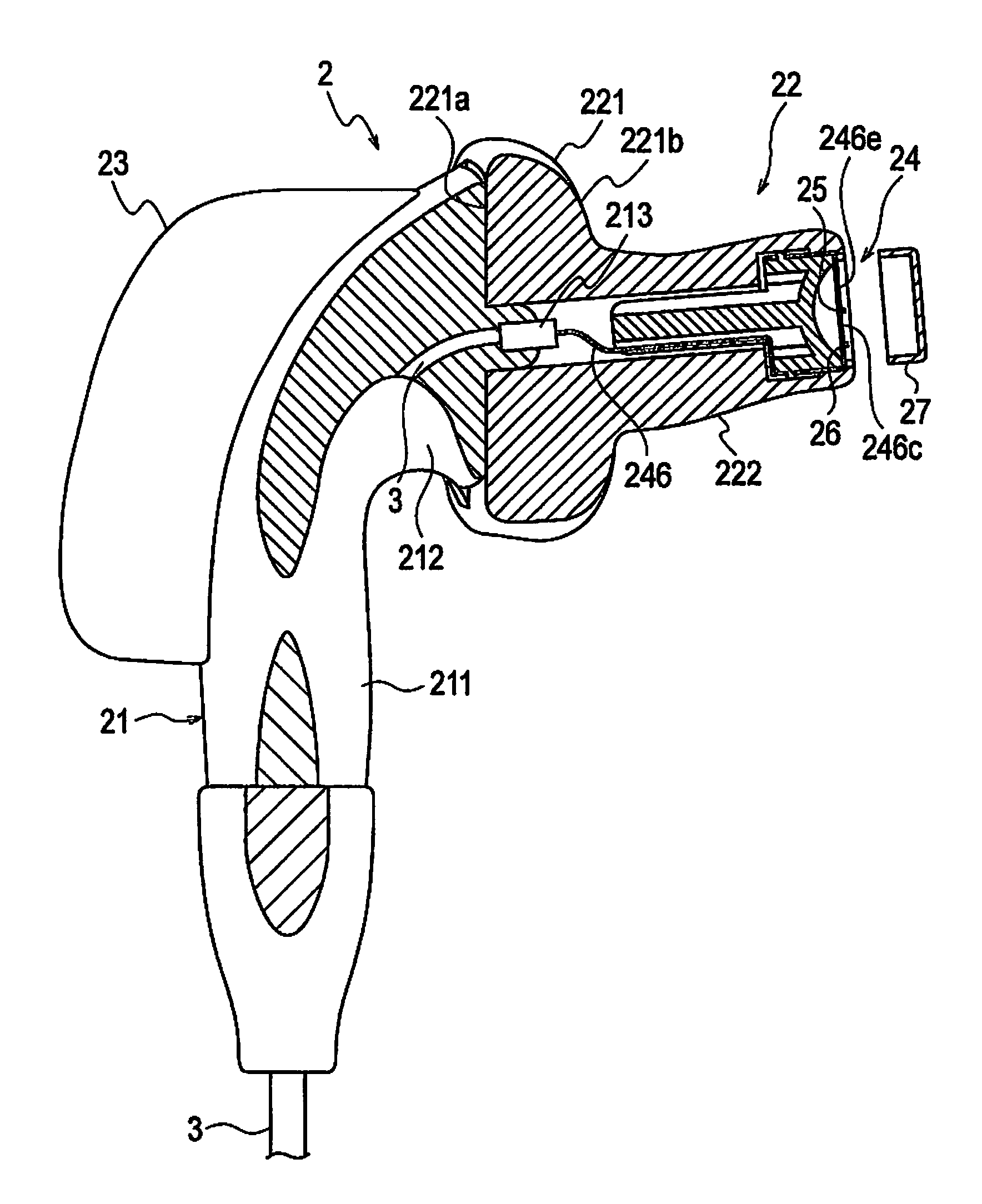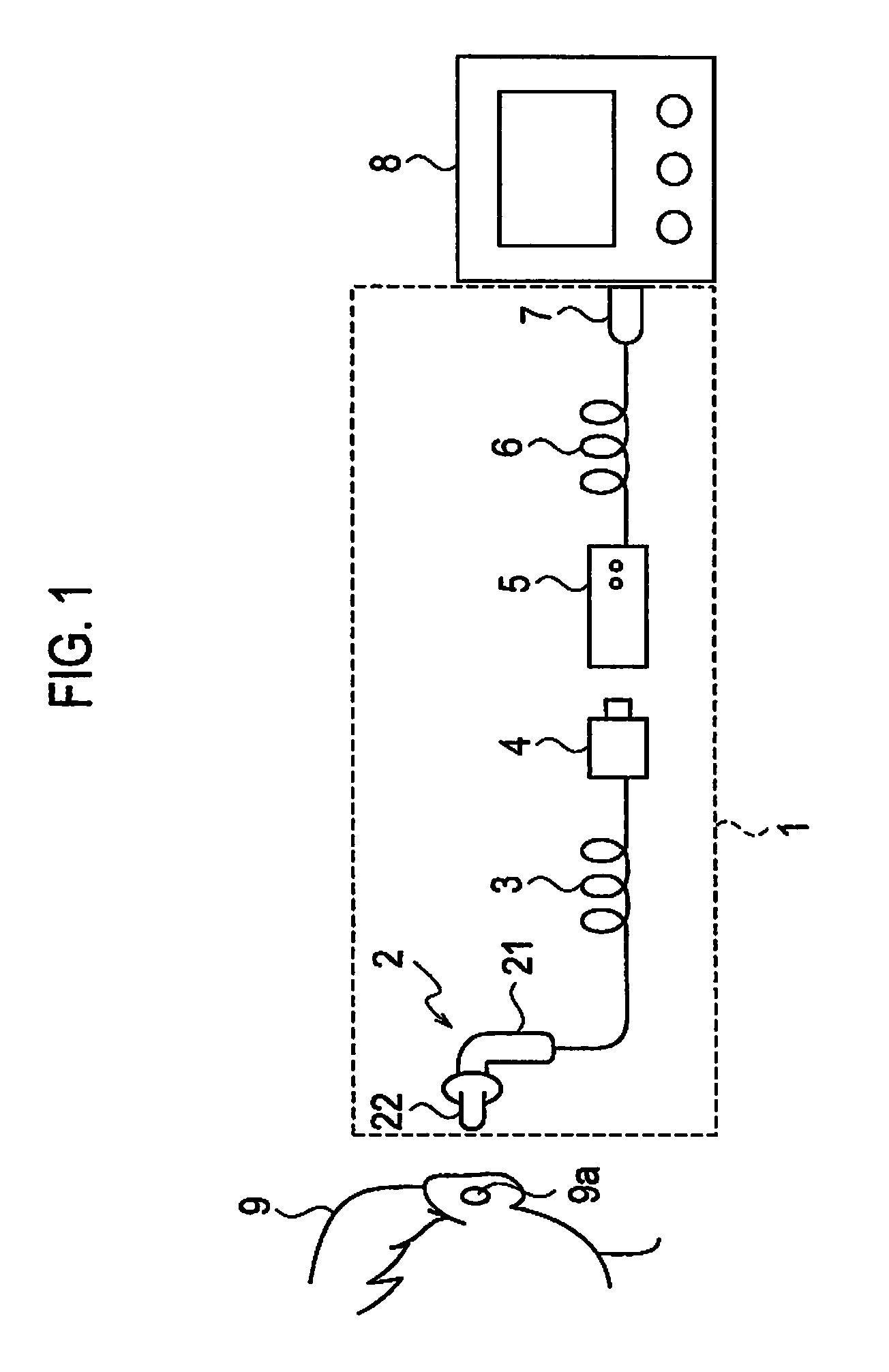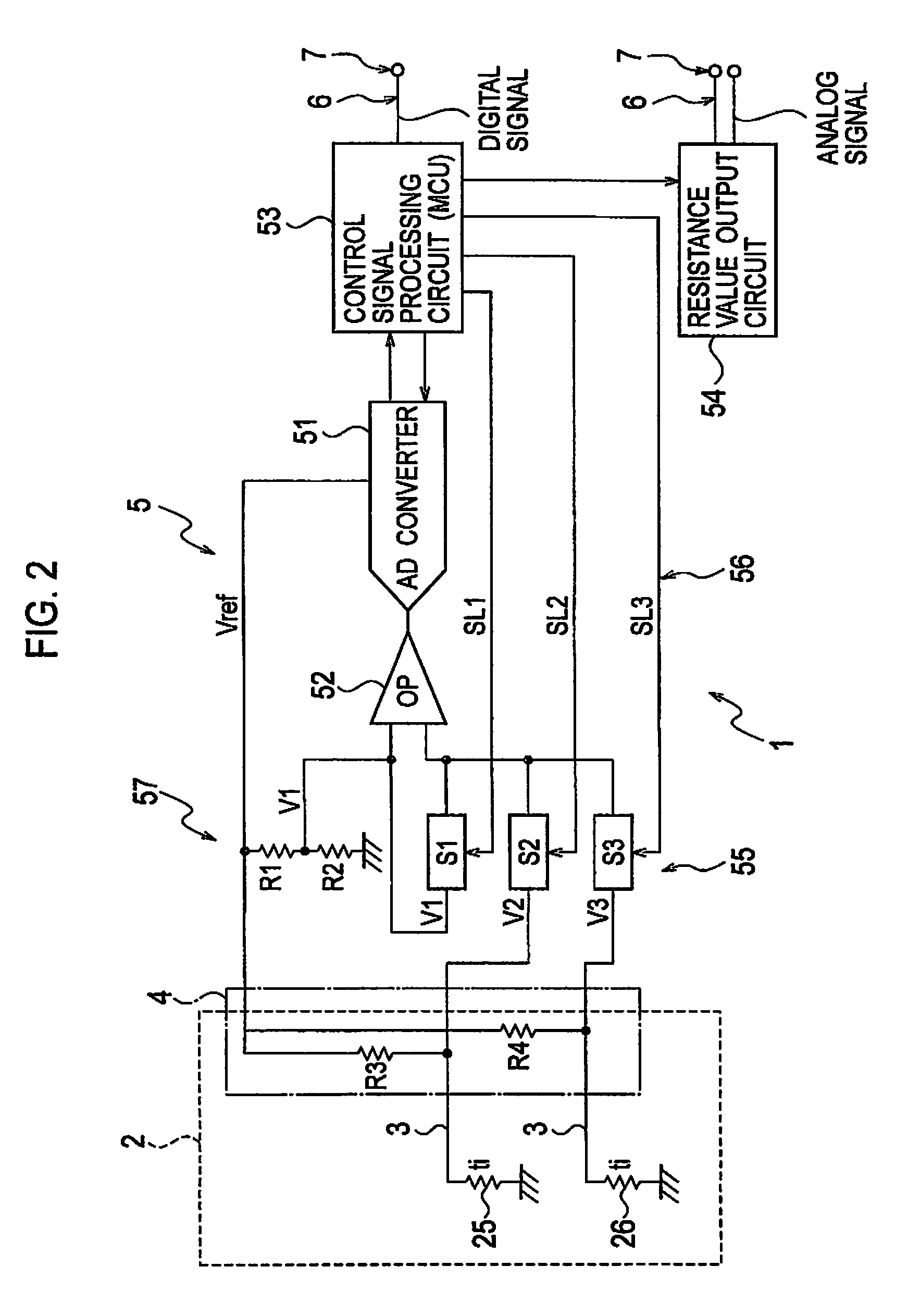Ear thermometer and measuring apparatus used with it
a technology of ear thermometer and measuring apparatus, which is applied in the direction of optical radiation measurement, instruments, spectrophotometry/monochromators, etc., can solve the problems of difficult to keep the accuracy of the thermistor for a wide range of ambient temperatures, temperature difference occurs to prevent a correct measurement, and the output of the probe is temporarily destabilized, etc., to achieve easy mass production and easy installation
- Summary
- Abstract
- Description
- Claims
- Application Information
AI Technical Summary
Benefits of technology
Problems solved by technology
Method used
Image
Examples
Embodiment Construction
[0055]Embodiments of the present invention will be explained in detail with reference to the drawings.
[0056]FIG. 1 illustrates a device configuration of an ear thermometer according to an embodiment of the present invention and FIG. 2 illustrates a circuit configuration thereof. As illustrated in FIG. 1, the ear thermometer 1 according to this embodiment has a probe 2 that is inserted into an ear hole of an object person, to measure the temperature of an eardrum and output a resistance value representative of the measured temperature, a cable 3 to transmit a measurement signal of the probe 2 and supply power to the probe 2, a male connector 4, a measuring apparatus 5 to perform a temperature measuring process and other control, a cable 6 connected to the measuring apparatus 5, and a female connector 7 connected to a front end of the cable 6. The female connector 7 connected to the cable 6 of the measuring apparatus 5 is connected to a monitor 8 to display a measured temperature.
[005...
PUM
 Login to View More
Login to View More Abstract
Description
Claims
Application Information
 Login to View More
Login to View More - R&D
- Intellectual Property
- Life Sciences
- Materials
- Tech Scout
- Unparalleled Data Quality
- Higher Quality Content
- 60% Fewer Hallucinations
Browse by: Latest US Patents, China's latest patents, Technical Efficacy Thesaurus, Application Domain, Technology Topic, Popular Technical Reports.
© 2025 PatSnap. All rights reserved.Legal|Privacy policy|Modern Slavery Act Transparency Statement|Sitemap|About US| Contact US: help@patsnap.com



